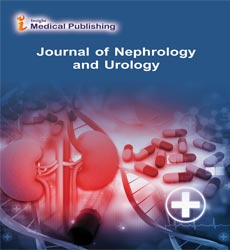Evaluation of CRRT Trends in Critically Ill Trauma Patients
Abstract
AKI is common in trauma patients. Bosco et al did a retrospective analysis and found almost 40 % trauma patients had AKI (1). AKI with Trauma carries severe mortality. In a study evaluating Trauma induced AKI , Perkins et al found patient with AKI having significantly higher mortality than those with normal kidney function (2). Many patients undergo renal failure requiring RRT. In view of hemodynamic instability, CRRT allows for less hemodynamic instability but has not shown superiority to intermittent hemodialysis.(3)We are evaluating CRRT trends in trauma patients admitted at R . Adams Cowley Shock Trauma Center for a period of two years. Methods: We selected patients with AKI undergoing CRRT for a period of two years at R Adams Cowley Shock Trauma Center and retrospectively studied them. Patients with ESRD were excluded. Starting BUN, creatinine, potassium, serum bicarbonate, urine output was compared and recovery to renal function noted. Results: Prelim data shows almost 55 % patients recovered renal function. The most striking variable was initiation of CRRT with decreasing urine output as a major indication for starting CRRT than any other variable, with mean urine output at start of CRRT being 686.5 ml/ day Conclusion: We conclude that initiation of CRRT in trauma patients based on decreasing urine output at early stage of AKI may result in renal recovery and improved outcome. Ongoing data analysis is underway in this regard.
Open Access Journals
- Aquaculture & Veterinary Science
- Chemistry & Chemical Sciences
- Clinical Sciences
- Engineering
- General Science
- Genetics & Molecular Biology
- Health Care & Nursing
- Immunology & Microbiology
- Materials Science
- Mathematics & Physics
- Medical Sciences
- Neurology & Psychiatry
- Oncology & Cancer Science
- Pharmaceutical Sciences
